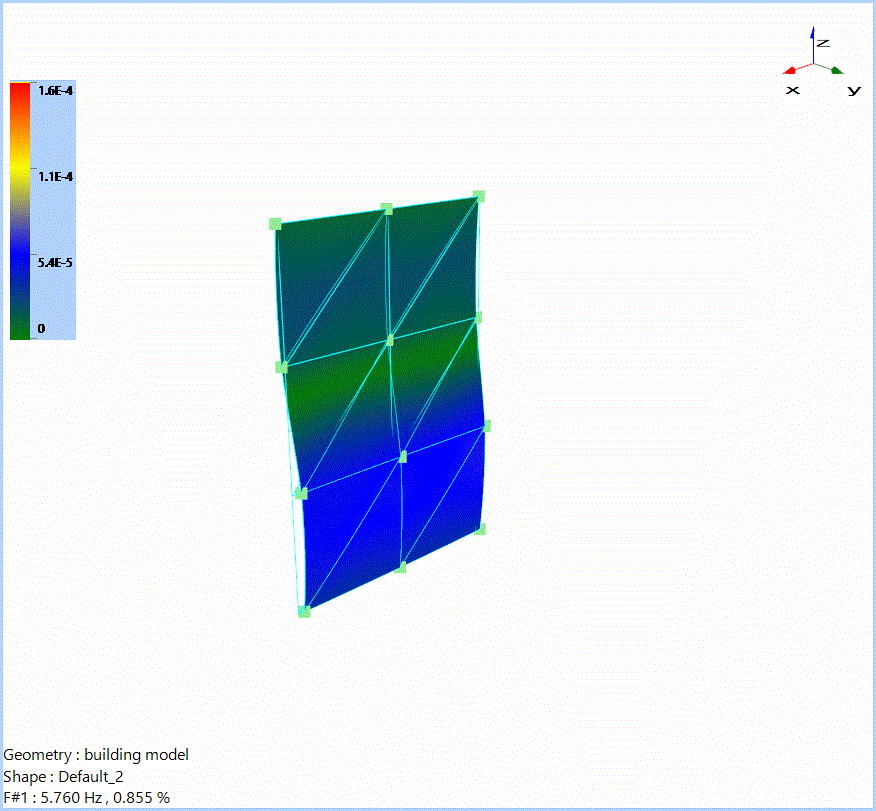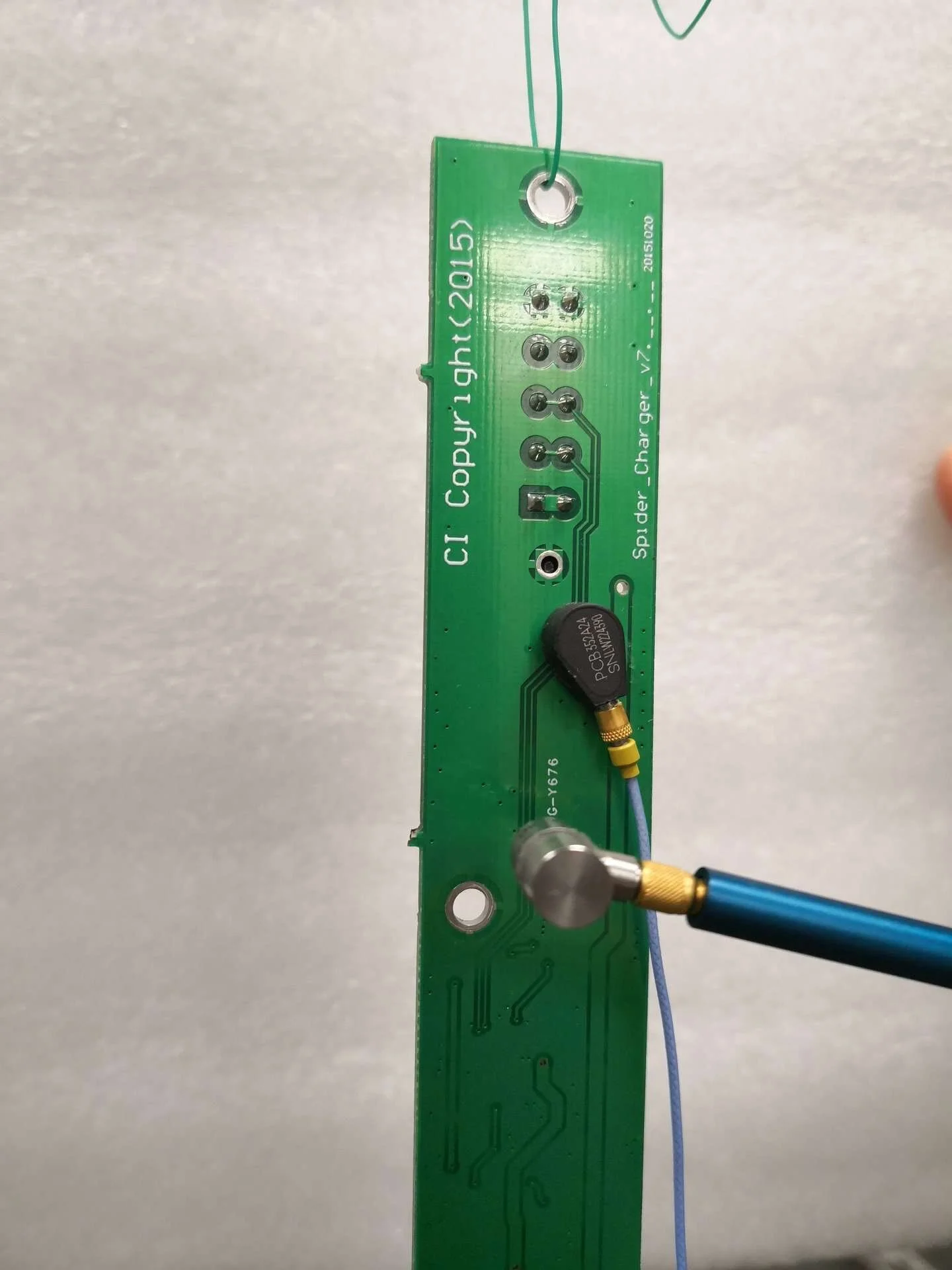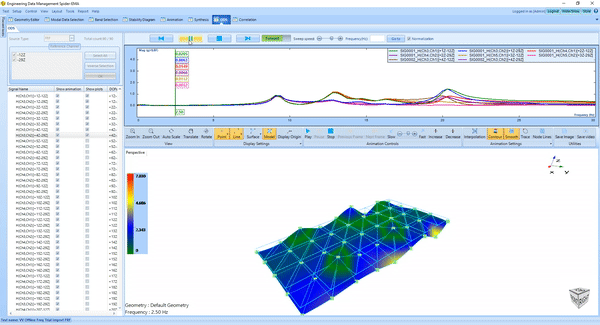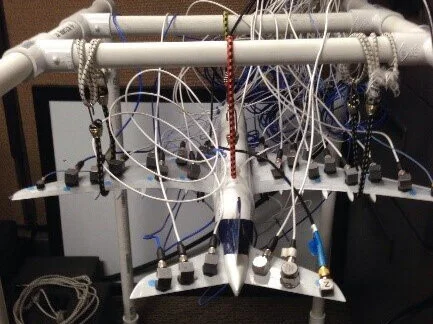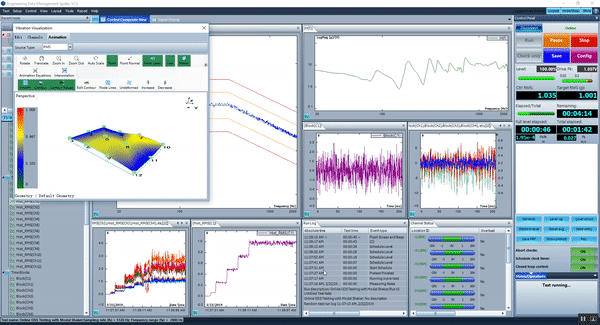Operational Modal Analysis (OMA) is commonly used to monitor and evaluate the health of building structures to investigate for any damage [1]. Studying the modal parameters of the structure can assist in observing changes in the dynamic properties which can further help in predicting error in certain elements which might need some repair or modification.
Read MoreSingle axis vibration control tests are widely used to qualify the behavior of the unit under test (UUT). If the UUT passes the test requirement then it provides confidence about the sustainability and durability of the test structure. However, sometimes excitation in multiple directions is required to test the robustness of the UUT which has led to the wide use of Multiple-Input Multiple-Output (MIMO) testing for the programmed test profiles. It is therefore important to make sure that the hardware setup allows for the unit to be tested in various configurations of single axis, dual axis, or three-axis. However, it takes long hours to manually change the setup because of the components (shaker setup, slip table, driving bar, fixture, etc.) involved.
Read MoreIn this case, the modal characteristics of a Printed Circuit Board (PCB) is acquired by performing experimental modal analysis. A hammer impact test is carried out with a single teardrop uni-axial accelerometer to study the modal behavior. The roving excitation method helps users completely avoid the mass loading effect that might be introduced with a roving response procedure. Since the PCB is lightweight, the selected hammer and sensor were chosen because they weigh considerably lesser than the board itself. To excite the higher frequency modes, a hard tip is chosen. The hammer impact test module of the EDM Modal suite assists in executing this test.
Read MoreOperating Deflection Shape (ODS) Analysis helps users understand the dynamics of the unit under test by animating the test structure’s vibration. As the term suggests, the structure’s deformation during operating conditions is visualized. This aids in understanding the forced response of the test unit.
Read MoreEarthquake testing is a crucial process that is used to determine the seismic performance of a structure. The utilization of a physical testing method helps users better understand the complexity involved in earthquake forces. A shaker table is typically used to execute a physical method of testing. The results from earthquake testing are used to optimize the design and material properties of the unit under test.
Read MoreModal testing and analysis are important processes that improve the design of a product. Therefore, it is crucial to ensure testing is carried out with optimal settings. The Shaped Random and Burst Shaped Random output excitation introduced by Crystal Instruments provides unique advantages such as a better estimation of the quality factor, damping and FRF amplitude. This indicates that the obtained modal parameters are more accurate. A modal test is carried out to examine the data to see the improvement in the results with these newly introduced techniques when compared to the conventional shaker excitation signals. The green curve shows the FRF obtained using the Shaped Random excitation and the blue curve shows the FRF obtained using the white noise excitation. As illustrated, the advantages of shaped peaks using the newly introduced approach leads to more accurate estimations of the quality factor, damping and FRF amplitude as discussed in the forthcoming sections.
Read MoreAnalyzing the modal parameters of a structure is crucial in optimizing the mechanical properties of the test object. The natural frequencies, damping and mode shapes of the unit under test help in adjusting the design of the test structure which ultimately improves the structural behavior of the test unit.
Read MoreThe latest 8.1 release of the Crystal Instrument’s EDM Modal software features multi-Resolution spectrum technology implemented into the MIMO FRF testing suite. Multiple passes of FFT yield a much finer resolution in the lower frequency region. This provides the advantage of a better estimation of the quality factor (or damping) and the amplitude of the frequency response functions at the resonant frequencies.
Read MoreIt is difficult to imagine the actual vibration level and distribution from the numerical display or signals, which are basically a mathematical representation of the vibration experienced by the structure under test. Animating the structure’s deformation provides users with a clearer representation of the intensity from vibration.
Read MoreExtracting the natural frequencies, damping shapes, and mode shapes of a structure aids in improving the design of the unit under test. In this case, the modal characteristics of a license plate is acquired by performing a modal analysis.
Read MoreThe EDM Vibration Visualization feature is available in all modules of EDM software (VCS, DSA and Modal). This option provides fast and efficient structural model generation and full 3D visualization of the online vibration pattern on the structure under test
Read MoreStudying the modal properties of the structure under test is important to optimize the design of the test structure and to improve the NVH characteristics. Finite Element Analysis is widely used to obtain the mechanical properties of different objects. However, it is not only difficult to replicate the exact environmental constraints and boundary conditions but also challenging to obtain the damping ratios of the different modes. Experimental modal analysis not only helps in solving these issues but can also help in validating the results of the finite element model.
Read MoreRoving excitation or response? Uni-ax or Tri-ax? SIMO or MIMO?
A modal impact hammer test is broadly classified between two types: roving hammer and roving response. Each method has its own pros and cons.
Read MoreSensors with an embedded TEDS (Transducer Electronic Data Sheet) chip allows EDM software to acquire the sensitivities and other manufacturing details of the transducer. However, the software can be empowered to do much more.
Read More


